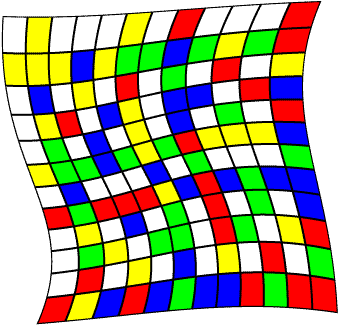 |
Origin of the Fibonacci Checkerboard
|
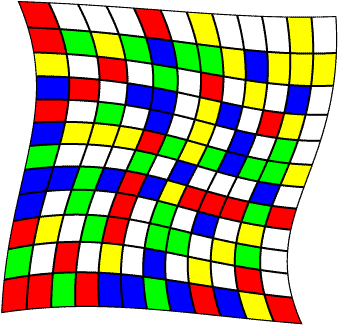 |
 |
Origin of the Fibonacci Checkerboard
|
 |
Fibonacci Checkers (or more simply, Slide Checkers) is a strategy game for two, three, or four players. It is played on a colorful board
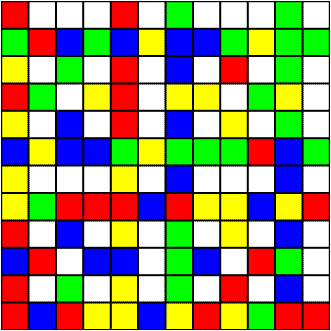
that is generated from a well known number sequence. To see how the game is played, here are the complete rules.
The colored pattern is created from an equation made famous by Leonardo Fibonacci in the 13th Century and it forms an ideal playing sirface for a variant of checkers. Count Fibonacci was the first to explore the number sequence
1, 1, 2, 3, 5, 8, 13, 21, 34, ...
This sequence can be generated by a simple rule: each number is equal to the sum of the two previous numbers. (Thus the next term of the sequence will be 21+34=55.)
A variant of this rule is to consider the modulo equivalent of each term in the sequence. Mathematicians have studied such sequences, but here we are going to plot them in an interesting way. For example, the modulo 4 version of hte Fibonacci sequence is:
1, 1, 2, 3, 1, 0, 1, 1, 2, ...
which forms a repeating sequence. Other, related sequences may be found by changing the starting values. For instance:
2, 2, 0, 2, 2, 0, 2, 2,... and
3, 3, 2, 1, 3, 0, 3, 3, 2, 1,...
are generated from the same rule (modulo 4) but with starting values 2, 2, and 3, 3 repectively. These sequences may be mapped to points on a graph (or squares on a board) by considering pairs of intervals. The first sequence contains the following pairs:
(1,1) (1,2) (2,3) (3,1) (1,0) (0,1)
which can be plotted:
.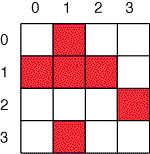
Similarly, the other two sequences contain the pairs
(2,2) (2,0) (0,2), and (3,3) (3,2) (2,1) (1,3) (3,0) (0,3). If these are colored yellow and green, the modulo 4 Fibonacci checkerboard becomes:
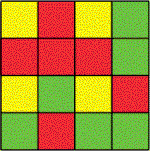
This is pretty, but it's too small to make an interesting playing board. Replacing the modular 4 sequence by the modular 12 sequence (and following the same idea) leads to a 12x12 pattern that is ideal for a playing surface for slide checkers. The full board is:

Here is a photo of a slide checkerboard that my dad made several years ago. In the photo you can see he is just about to make a bad move. There are also several possible variations on the playing surface. The rules to the game are simple, good strategies may not be so easy. Good luck and have fun!
![]()
To get to my homepage, click here.